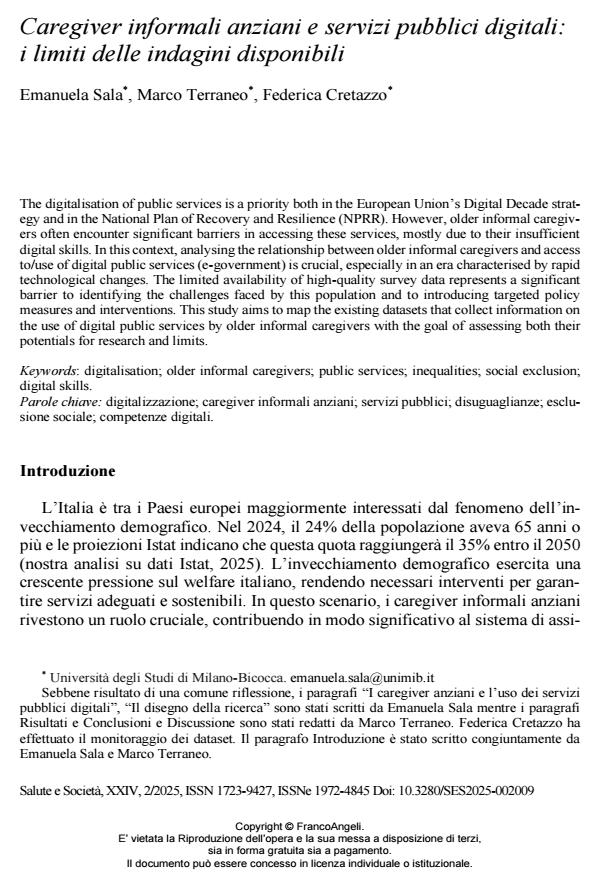Caregiver informali anziani e servizi pubblici digitali: i limiti delle indagini disponibili
Titolo Rivista SALUTE E SOCIETÀ
Autori/Curatori Emanuela Sala, Marco Terraneo, Federica Cretazzo
Anno di pubblicazione 2025 Fascicolo 2025/2
Lingua Italiano Numero pagine 13 P. 105-117 Dimensione file 397 KB
DOI 10.3280/SES2025-002009
Il DOI è il codice a barre della proprietà intellettuale: per saperne di più
clicca qui
Qui sotto puoi vedere in anteprima la prima pagina di questo articolo.
Se questo articolo ti interessa, lo puoi acquistare (e scaricare in formato pdf) seguendo le facili indicazioni per acquistare il download credit. Acquista Download Credits per scaricare questo Articolo in formato PDF

FrancoAngeli è membro della Publishers International Linking Association, Inc (PILA)associazione indipendente e non profit per facilitare (attraverso i servizi tecnologici implementati da CrossRef.org) l’accesso degli studiosi ai contenuti digitali nelle pubblicazioni professionali e scientifiche
The digitalisation of public services is a priority both in the European Union’s Digital Decade strategy and in the National Plan of Recovery and Resilience (NPRR). However, older informal caregivers often encounter significant barriers in accessing these services, mostly due to their insufficient digital skills. In this context, analysing the relationship between older informal caregivers and access to/use of digital public services (e-government) is crucial, especially in an era characterised by rapid technological changes. The limited availability of high-quality survey data represents a significant barrier to identifying the challenges faced by this population and to introducing targeted policy measures and interventions. This study aims to map the existing datasets that collect information on the use of digital public services by older informal caregivers with the goal of assessing both their potentials for research and limits.
Parole chiave:digitalizzazione; caregiver informali anziani; servizi pubblici; disuguaglianze; esclusione sociale; competenze digitali.
Emanuela Sala, Marco Terraneo, Federica Cretazzo, Caregiver informali anziani e servizi pubblici digitali: i limiti delle indagini disponibili in "SALUTE E SOCIETÀ" 2/2025, pp 105-117, DOI: 10.3280/SES2025-002009